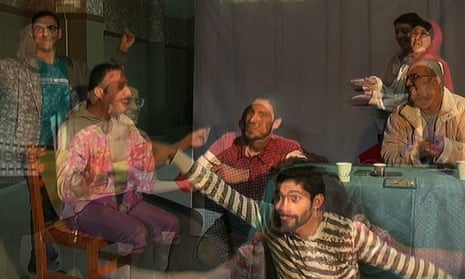Artists in London and Gaza are to launch a series of simultaneous, live-streamed performances this month in an attempt to connect people living under severe blockade in the coastal enclave with international audiences in Britain.
Performers will use video projection as a backdrop to simulate walking through each other’s homes and streets, and interact as if they were in the same room, even as they are separated by 2,000 miles.
The show’s producers say At Home in Gaza and London explores “survival tactics, creative impulses and coping mechanisms that sustain those living in Gaza, while at the same time celebrating a temporary release via the technological innovation of a working space, a playing space, without borders”.
It is led by Station House Opera, a UK-based theatre group that has operated concurrent performances across the globe, including in Brazil and Singapore.
However, Gaza is one of the most inaccessible places on earth, with neighbouring countries Israel and Egypt strictly limiting freedom of movement. Many Palestinians living there have never left the 140 sq mile strip of land.
Co-director Taghrid Choucair-Vizoso said the idea was to see how “people in radically different circumstances, with different cultural circumstances, come to collaborate”.
Palestinian artists involved in the forthcoming performance are not professional actors but from Gaza’s creative community, including a musician and a dancer. They have helped draft the show, which is semi-autobiographical.
“It was really important for us not to send over a play script or design a performance, finished and polished. Because that’s very presumptuous, it’s slightly colonialist. We wanted to work collaboratively,” said Choucair-Vizoso.
The plan originated in 2010, and during the 2014 war in Gaza between its rulers Hamas and Israel, the two directors decided they should work towards a performance.
Co-director Julian Maynard Smith said the pair set up workshops in which Palestinian artists and actors in London could use the technology for joint workshops. “We found very early on with the workshops that it was very moving to inhabit a [shared] working space,” he said.
The project has funding from arts and culture organisations, including the UK-Palestinian AM Qattan Foundation.
Operating under such onerous conditions has been tough. The team had to source a generator because Gaza suffers from crippling 20-hour power cuts. Tight restrictions on imports, which Israel and Egypt say are for security reasons, mean the group have had issues bringing in equipment.
One designer working with the group had been trying to get a visa to Turkey for five years. He finally managed to leave for Istanbul the day before rehearsals began.
And in the weeks leading up to the performance, Gaza has suffered its most devastating violence in years. For the past two months, Israeli forces have killed dozens of Palestinians and shot thousands protesting along the perimeter. Gaza-based militants have fired rocket and mortar shells into Israel, whose forces responded with wide-scale airstrikes.
Choucair-Vizoso said the team decided the recent violence had to feature in the performance, although she added: “Just because there is a common experience in Gaza, it doesn’t mean everyone feels it in the same way.”
Assistant director and Gaza-based collaborator, Amjad Shabat, said there is no plot or timeline. “It’s more about artists using each other’s homes, streets, workplaces to share their personal stories and their life perspective.”
One scene focuses on living costs in the two places, while others deal with marriage, children and the inability of Palestinians trapped in Gaza to travel.
Teams in both countries have developed deep bonds during years of interacting via live video channels, says Shabat.
“For me, this project gives us the space to experience different places. Sometimes in rehearsals, we forget about the place that we are in.”
- At Home in Gaza and London is at Battersea Arts Centre, London, 28 June-1 July, and Liverpool Arab Arts festival, 9-10 July.
